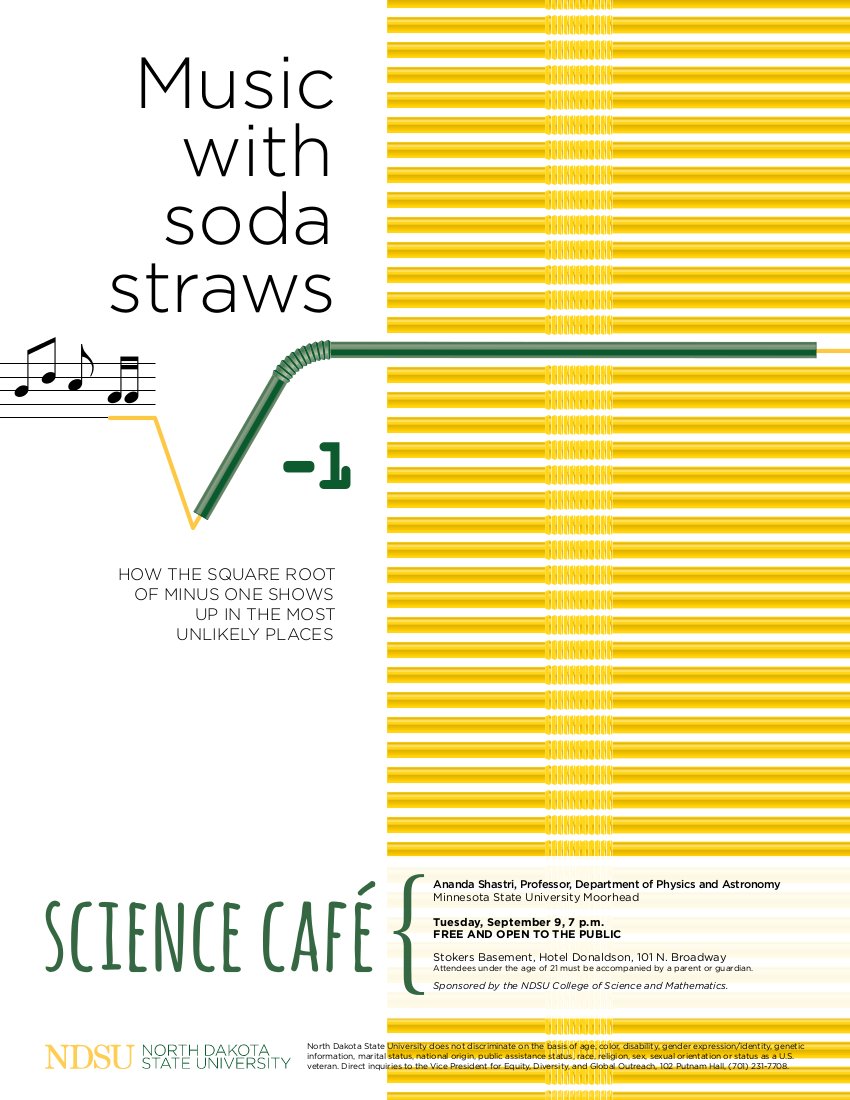
Music with soda straws: how the square root of minus one shows up in the most unlikely places
Ananda Shastri
Department of Physics and Astronomy, Minnesota State University Moorhead
Abstract: Music starts with something in vibration, from the strings of a guitar to the air stream over the opening of a flute. Mathematics provides a beautiful language for describing many phenomena that arise in music, and the theory of musical acoustics is a vibrant and well-developed field in physics. Come see a simple demonstration illustrating why the square root of -1, a concept once thought to be mathematically meaningless, provides a description for vibrating systems. Then, by playing with simple instruments you will make from ordinary soda straws, you will experience some of the phenomena where the square root of -1 emerges. You will leave with a sense of wonder at the power of the math to describe the world around you.

Green Fuel from Water and Sunlight
Dmitri Kilin
Department of Chemistry, University of South Dakota
Abstract:Producing of environment-friendly and renewable fuel such as the hydrogen gas with a use of the most abundant supplies - the water and sun's energy - is an efficient solution of the energy problem to meet the desired living standards. However, many challenges in photo-driven hydrogen production are not resolved yet, including the high cost, high-quality materials, and inefficiency of utilized chemical and physical process governing the conversion of the solar energy to the energy needed for the chemical reaction of breaking water into hydrogen and oxygen. In this talk we will introduce a story of the hydrogen generation, discuss what governs the water splitting reaction, and how to facilitate it by an appropriate choice of photo-catalytic agents. The role of theory and computations in providing the guidelines for promoting systematic improvements in photo-catalyst activity will be also discussed.

Nanomaterials: History, Technological Potentials and Concerns
Svetlana Kilina
Department of Chemistry and Biochemistry, North Dakota State University
Abstract: Development of science from XVIII to XX centuries was driven by atomistic hypothesis that elements (electrons, atoms, molecules) and their composition completely determine physical and chemical properties of materials, such as color, weight, reactivity, mechanical strength, etc. In last decade of XX century, scientists proved, however, this approach is incomplete: Not only chemical composition, but the size and shape of samples do determine the properties of materials! However, the last one paly a noticeable role only at the very small sizes, when systems are in the size of 1-100 nanometers - so minute that billions could fit on the head of a pin. This is the size of materials used in nanotechnology. The variety of nanomaterials is great, and their range of properties and possible applications appear to be enormous, from extraordinarily tiny electronic devices, including miniature batteries and solar cells, to biomedical uses, and as packaging films, superabsorbants, components of armor, and parts of automobiles. In this talk we overview the history and human factors in developing of nanotechnology, the benefits it offers to society and its potential effects on human health and the environment. We will focus on most intriguing discoveries and exciting problems that nonscientists attempt to solve nowadays. Overall, the small size makes the nanomaterials both promising and challenging.